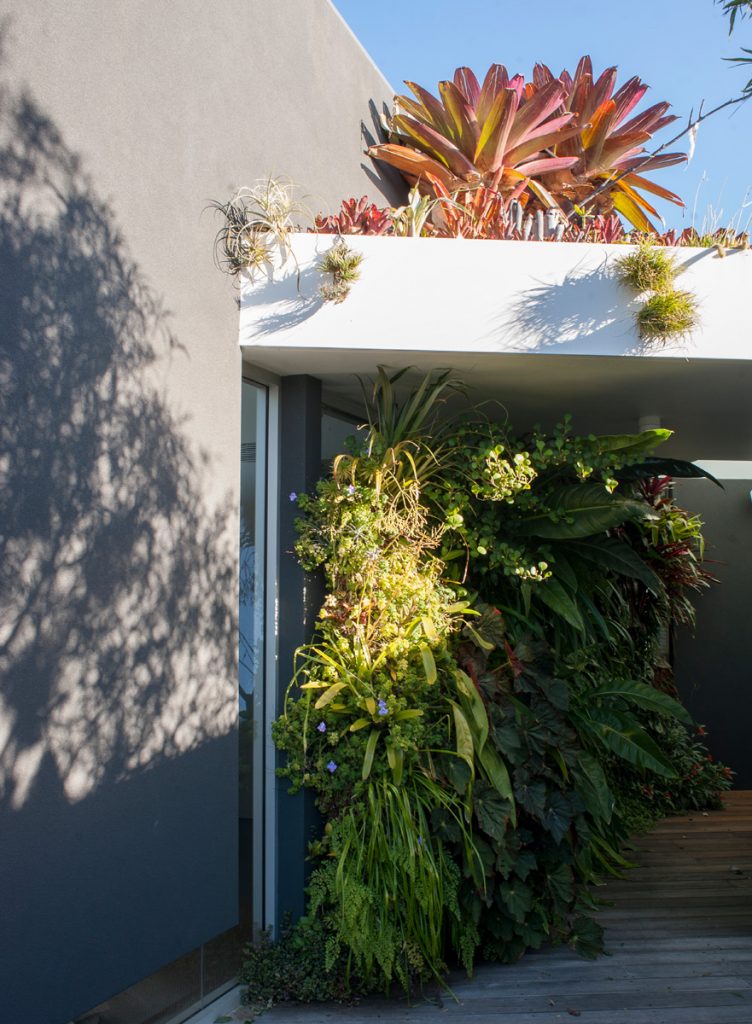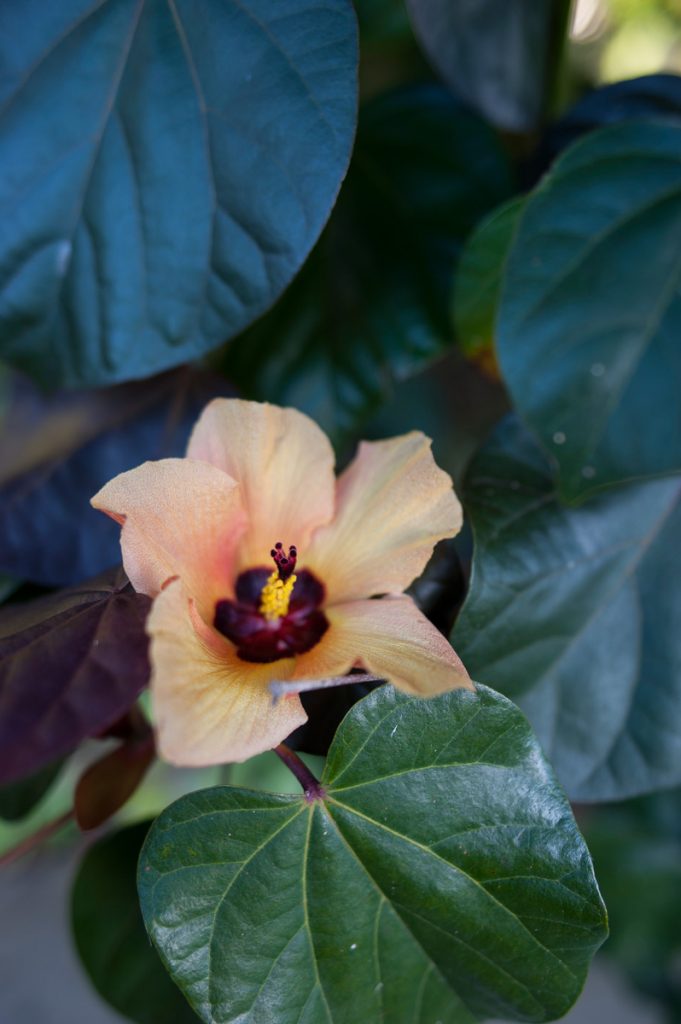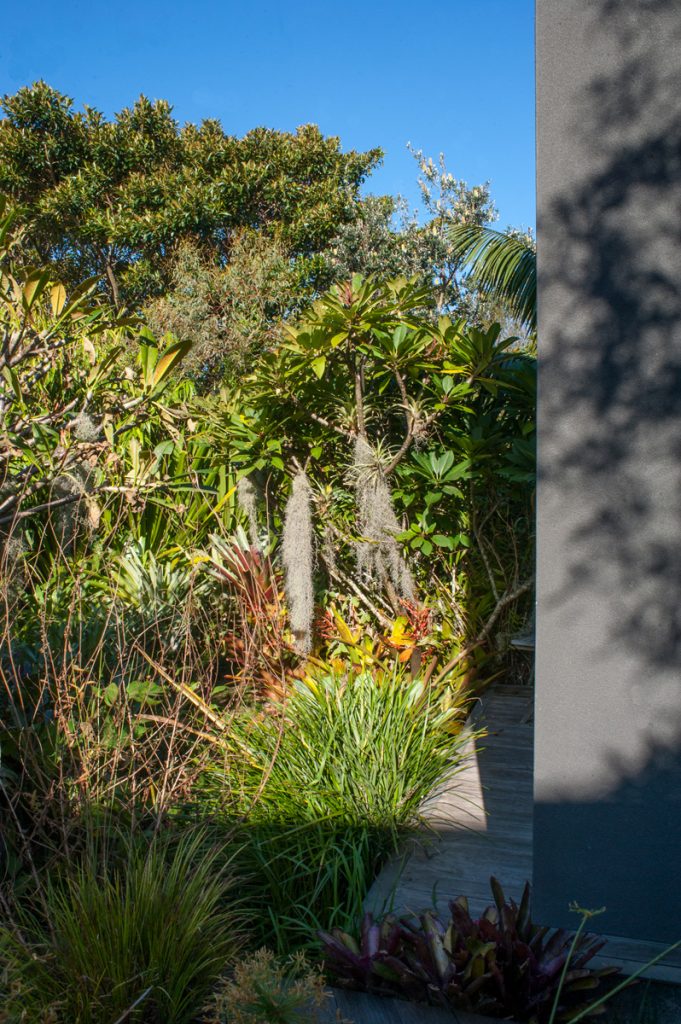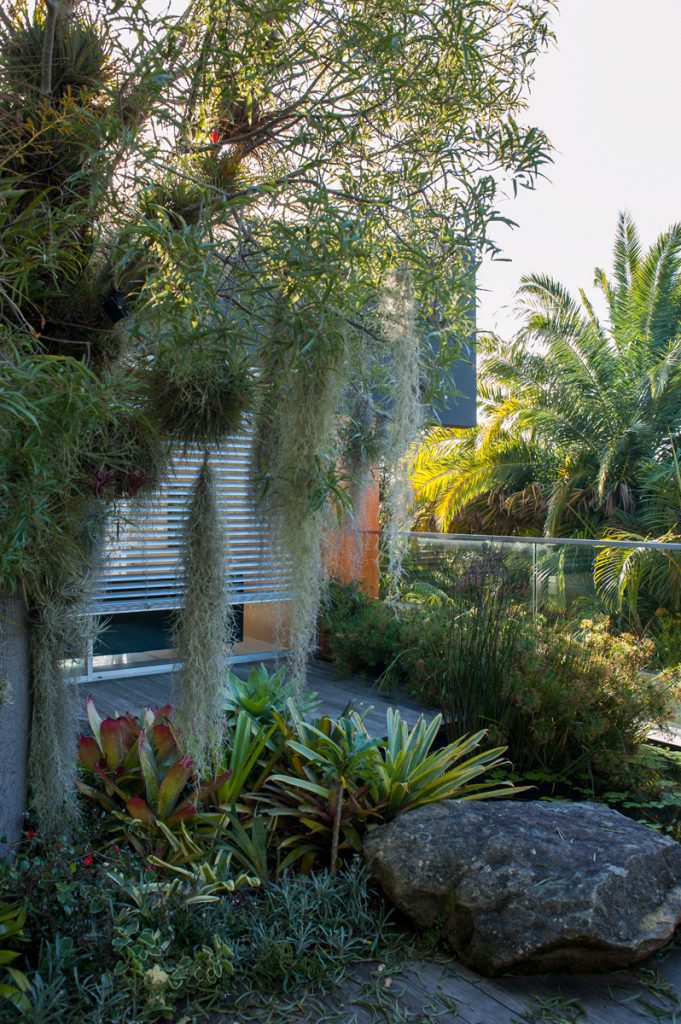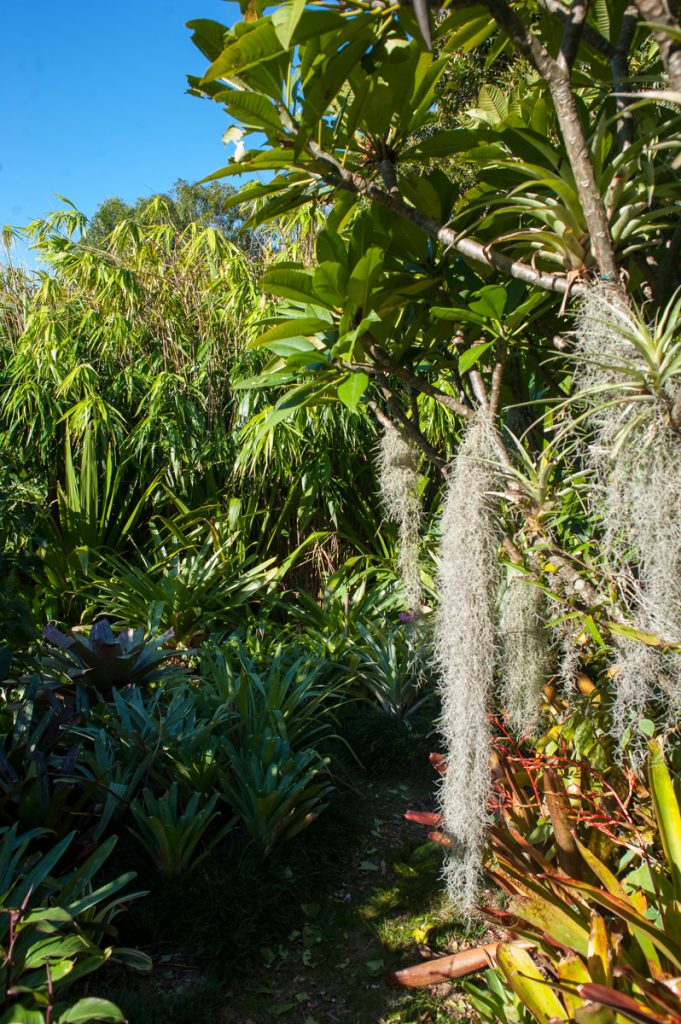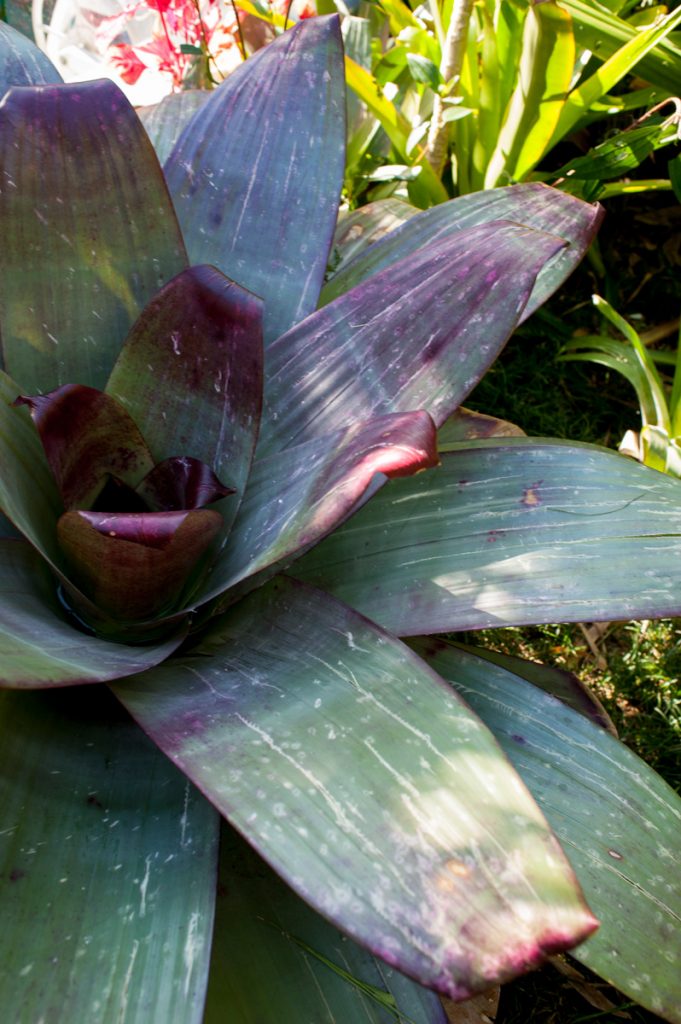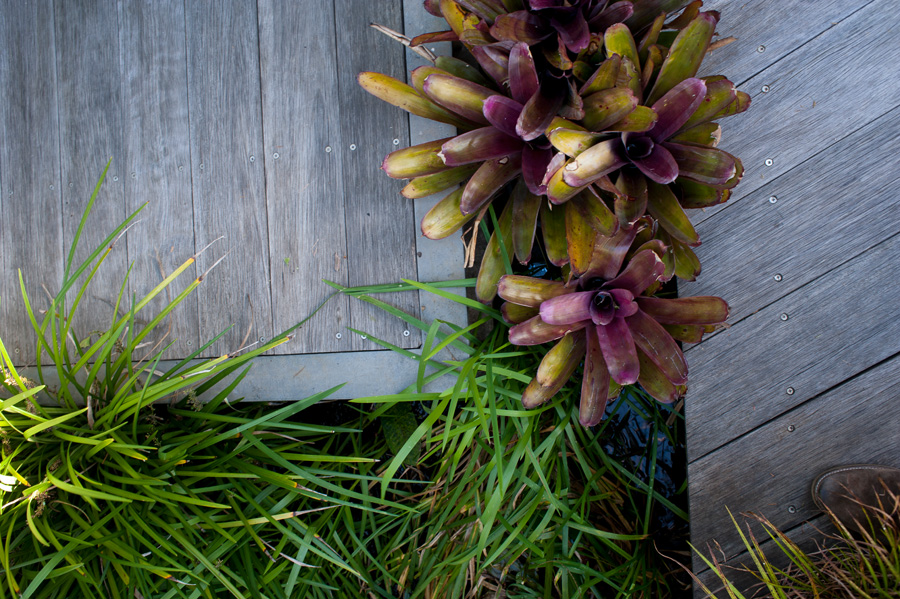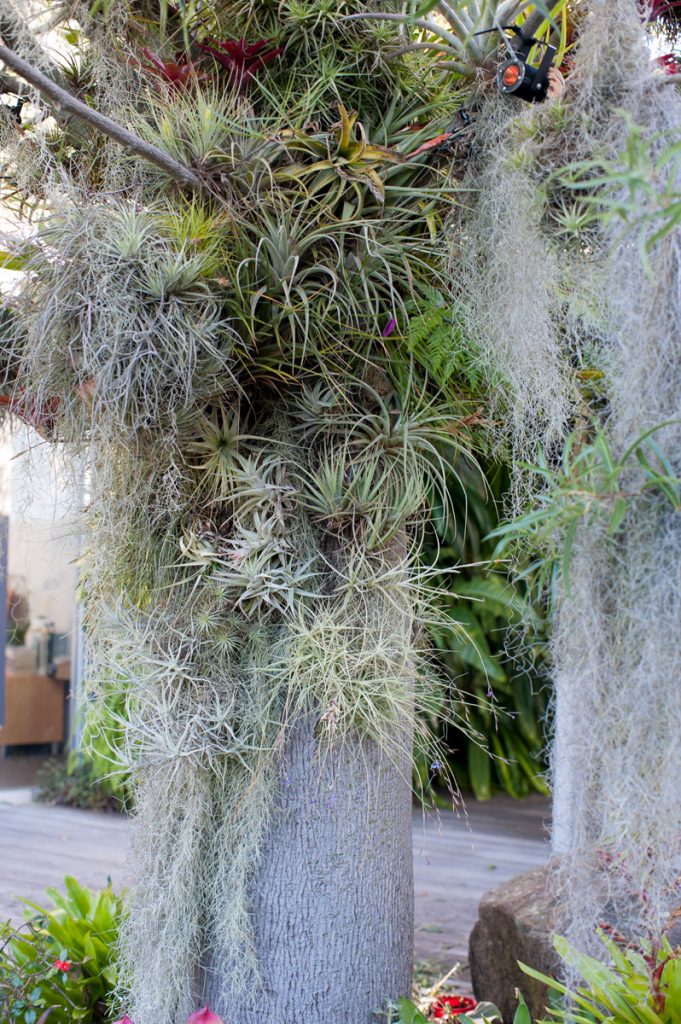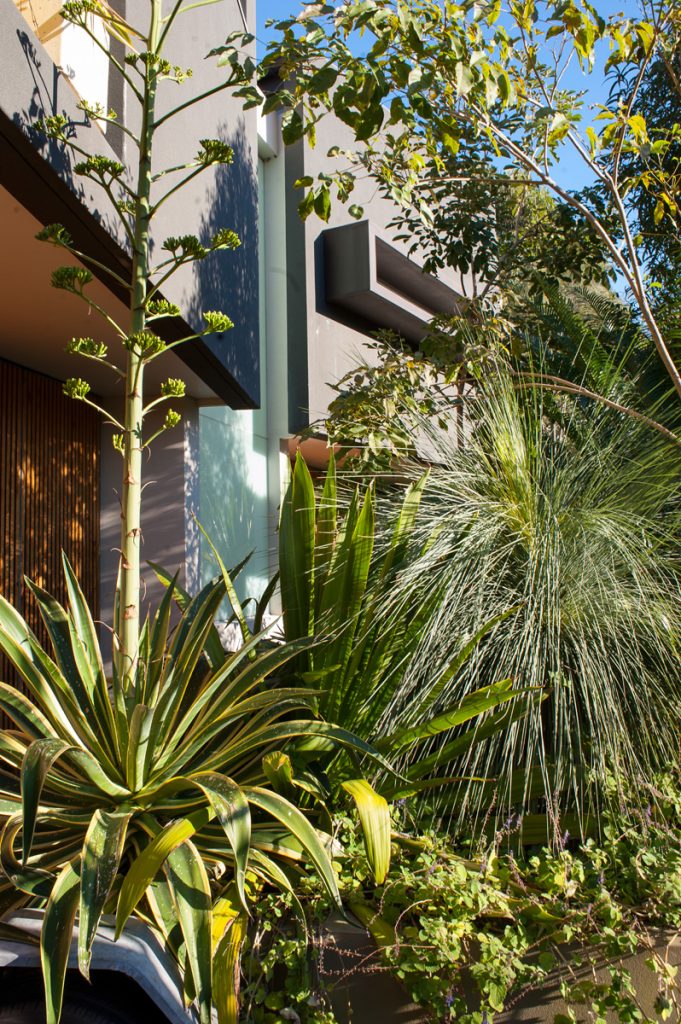Inherited Passion
After 25 years in the business, green wall designer and builder Mark Paul has used all of his specialist plant knowledge to transform his own sandstone-based garden.
A site consisting of near solid sandstone would faze most people wanting to create a garden, but not Mark Paul. For the owner of The Greenwall Company – designers and builders of green roofs, as well as vertical gardens – his own house site shared many of the same features and constraints as the built environments he deals with every day, just on a larger scale.
The irregular-shaped block in Sydney’s Mosman had been home to an army officer’s house erected in the 1970s. After the Middle Head army sites were handed over to the Sydney Harbour Trust in 2001, a few of the houses were sold off as residences, some were demolished to make way for open space, and the older, historic buildings were restored and are now leased out to small businesses.
The simple single-storey bungalow that Mark bought sat on the surface of the land, but in order to fit into the building envelope required by council, his new two-storey house had to be cut into the sloping rock at street level, which left high sandstone ledges around the remaining three sides. To provide room for plantings to soften the house’s façade, three large podium planters were built across the front of the site, with a fourth tucked beside the side access stairs. In the courtyard behind the upstairs living area are two more, surrounded by decking: one is now home to a Queensland bottle tree; the other is used as a wetland and large fishpond.
The rest of the five-year-old garden is literally built on rock. “The soil is only 200–300 mm deep in most places,” says Mark. “We brought in just enough soil to create a garden and then I used the same palette of plants that we use on green walls and roofs – plants that grow on rock faces or in very thin, poor soils.”
What is so surprising is that this isn’t a sparse garden of small succulents and spiny groundcovers; it is a lush, sub-tropical oasis. There are trees – including eucalypts, water gums, lilly pillies, tuckeroos (Cupaniopsis anacardioides), a Queensland waratah (Alloxylon flammeum), a white oak (Grevillea baileyana) and several red-leaved cottonwood (Hibiscus tiliaceus “Rubra”) – as well as tree ferns, shrubs and Gymea lilies. And of course there are hosts of Mark’s much-loved alcantareas: large, striking bromeliad species which he has sourced himself from Central and South America. They, along with other hardy plants, also cover the house’s roof and a lychgate over the main entry.
Mark’s passion for these and other species of epiphytic and lithophytic plants (those that grow naturally on tree branches or on rocks) was inherited from his grandmother.
“She came out from Ireland and settled in Windsor,” he explains. “When I was two we moved to Newport and took with us a whole bunch of plants from her garden, like dendrobium orchids, Billbergia nutans , Aechmea weilbachii and Neoregelia spectabilis – about a dozen of those very common, old plants. I remember there was a sandstone embankment in the garden and there were hundreds of billbergias growing on it. They sat there all through summer and no one looked after them, but every third year the whole bank would be pink with a thousand billbergia flowers. And that’s what got me hooked.”
This interest led to Mark studying horticulture after he finished a degree in marine biology, where he specialised in coral reefs and estuarine environments. When you learn this about the man it’s not surprising. The glowing colours of the mass-planted bromeliads and other species (240 in all) on the roof of his house resemble a beautiful coral reef, with all its complexity of colour and texture.
Clerestory windows in the bedrooms and living areas allow it to be enjoyed from inside the house. Even the beautiful nine squaremetre green wall on one side of the main courtyard looks like a bank of luxuriant seagrasses in an underwater grotto.
“There are about 140 species in this green wall,” says Mark. “There are 30 orchids on it alone, but you don’t notice them until they flower.” As well as the shy orchids, there are African violets, stripy peperomias, large-leaved anthuriums, gloxinias, more bromeliad species and three hippeastrums.
Most of the plants in the garden were either propagated or collected by Mark, or given to him, continuing a garden tradition enjoyed by his grandmother’s generation. “She grew everything from either cuttings or seed,” he says. “In those days people shared plants over a cup of tea, and her plants were a collection of memories for her. The market gardeners still do that sort of thing, but sadly it’s a part of horticulture that’s disappearing. People today don’t have the time or the patience.”
Mark is, however, determined his two teenage sons won’t grow up without an understanding of the natural world. “As well as taking into account amenity, aspect, cultural requirements and view lines, this garden accommodates the demands of a family and two boys who need to understand about vegetable gardens, chickens, fish and tadpoles.”


